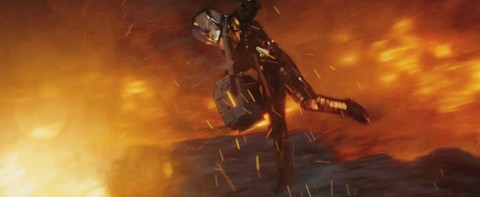So like a lot of people, I saw Star Trek Into Darkness last week. I liked the casting, the acting, many of the effects. I had problems with the storyline and a number of plot holes that didn’t make a lot of sense in hindsight. In general, I had less problems with the science in this one than the reboot (setting aside established Trek pseudoscience that isn’t always consistent). But I wanted to take a few moments to comment on one issue I that still irritates me. Minor spoilers ahead as we discuss some “spoiled science.”
The opening sequence of the movie is fun and visually exciting. It sets up the themes of the movie and the underlying character conflicts that drive the story.
But it also commits a crime against science in my opinion.
Let me explain.
First, let’s ignore the crime of copying the central conceit of The Core, requiring human-delivered — or in this case — vulcan-delivered technology to avert a natural disaster. We forget that we have robots and timers and all sorts of handy devices that all humans to stay out of danger. That’s not exciting, after all, even if it is very logical.
And let’s ignore the fact that this volcano does not look to be a super volcano capable of extinguishing the native species on this world (unless perhaps they are seriously only a few dozen who live around its base, which seems unlikely).
It’s also early on in the history of the Federation and transporter technology failing in order to heighten the drama is a standard of the original Star Trek series.
No, I want to point out a failure to use one of the standard Star Trek tropes, one that I don’t like so much, but missed in this sequence: technobabble. I don’t like technobabble, but it has its uses.
The technology that Spock is using to stop the volcano is called “cold fusion.”
Ugh!
There’s something that we actually call cold fusion in the real world — whether or not it actually works as advertised, which is still making news today — and that is a fusion process that can occur at relatively cold temperatures, like room temperature, or something far short of the conditions found in the centers of stars.
“Cold fusion” seems to have been used here to mean a technology that can suck the heat out of lava in some kind of conservation-of-energy defying chain reaction that doesn’t also freeze the atmosphere.
What’s so bad about this? Setting aside my scientist hat and donning my science fiction writer beanie, anything that knocks the viewer out of the story to say to themselves, “That doesn’t make sense…” is a bad thing. It’s distracting. It is the loss of the suspension of disbelief, and it is to be avoided.
Here was a case where a little technobabble would have been welcome. Instead of “cold fusion,” how about molecular dampener? Geothermal stabilizer? Quantum crystalizer? Hell, even Kirk or Bones referring to it by a nickname like “Volcano Freezer” because the technical name was too complex would have been better than appropriating a term than brings something else specific and controversial to mind.
Anyway, the term made me cringe while watching the movie. It’s better not to have any viewers cringe. The little things can matter.
And the kicker? Parts of the movie were shot in the National Ignition Facility where fusion research is conducted, although in this case it’s not a dish best served cold, or served at all.










